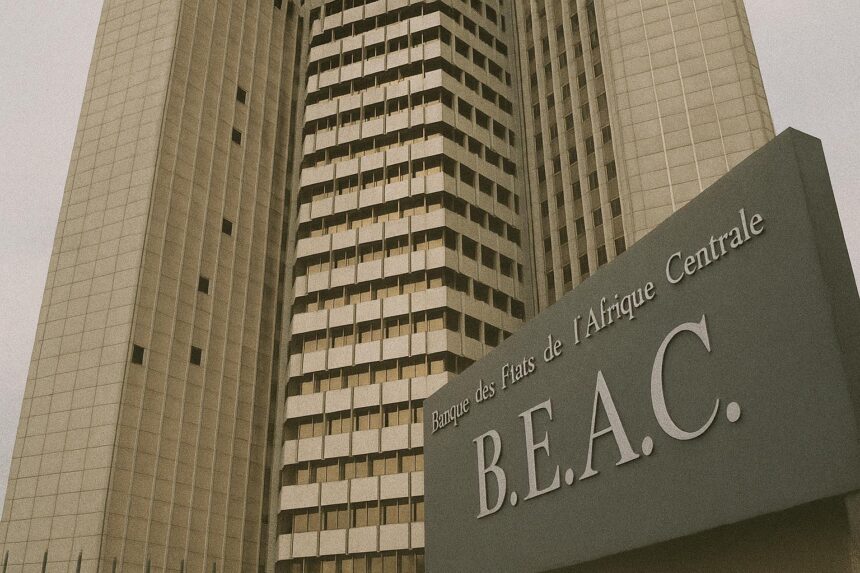Regional monetary prudence under review
On 18 June 2025 the Governor of the Bank of Central African States (BEAC) issued a circular that recalibrates how commercial banks execute dollar-denominated transfers to destinations outside the Central African Economic and Monetary Community. The document, already lodged on the eTransfer platform, applies exclusively to transactions initiated from franc-CFA accounts, thereby creating a distinct channel that is segregated from operations funded by pre-existing foreign-currency deposits. Such surgical differentiation, officials argue, is essential to protect the region’s external reserves while keeping the payments system fluid (BEAC Circular, 18 June 2025).
For Congo-Brazzaville, a founding member of CEMAC, the measure is presented as a continuation of its monetary cooperation with its partners and with the French Treasury, not a retreat into siege mentality. The Finance Ministry privately stresses that a predictable rule-book is more valuable to investors than unfettered speed, a view echoed by recent International Monetary Fund surveillance reports that encourage prudent reserve management across oil-exporting states (IMF Article IV Consultation, 2024).
Operational timetable reshapes banking routines
Under the new scheme, commercial banks receive BEAC’s transfer authorisation one business day after placing the order. From that juncture a tight clock starts ticking. Absence of objection by 14:00 on the following day implies tacit acceptance, and the debit is effected on value date J+2. The Central Bank simultaneously publishes the reference exchange rate and informs each institution of the exact CFA counter-value before 15:00 on J+1, allowing treasurers a narrow but reliable window to square positions.
The success of the framework hinges on the banks’ ability to post sufficient funds by 10:00 on value date. A single shortfall now triggers an automatic rejection, with costs borne by the client bank. Sources in Brazzaville’s banking community candidly admit that back-office procedures will have to become ‘near-military’ to meet the cut-off, yet they welcome the clarity: under the previous regime value-dates were sometimes inferred verbally, exposing dealers to intraday liquidity stress.
Hard-currency scarcity and systemic resilience
Behind the technical jargon lies a macroeconomic concern familiar to many commodity producers: the cyclical mismatch between dollar inflows and resident demand for overseas payments. Brent prices may have rebounded since the 2020 trough, but BEAC data still show a cautious rebuild of gross reserves, hovering around four months of imports—only marginally above the convergence threshold agreed with the IMF (BEAC Statistical Bulletin, 2025).
By tightening the procedural screws rather than imposing outright quotas, policymakers seek to moderate the tempo of outflows while signalling that the CFA-zone peg remains untouchable. Analysts at the Paris-based think tank FERDI note that a similar philosophy guided the October 2019 circular on daily exchange-rate publication, viewed at the time as an incremental step toward transparency rather than control.
Regulatory coherence with international standards
Diplomats in Libreville and Brazzaville emphasise that the circular converges with Basel-compliant payment-settlement norms. The two-day value lag is broadly in line with the T+2 convention used by major reserve-currency jurisdictions, while the pre-funding requirement mirrors anti-money-laundering recommendations issued by the Financial Action Task Force.
Congo-Brazzaville’s embassy in Washington highlights this point in its latest investor brief, stressing that the country’s alignment with global compliance cues facilitates correspondent-bank relationships, a sensitive issue since several international banks curtailed links with smaller African counterparts in recent years over de-risking concerns.
Investor reception and diplomatic undertones
Market practitioners split hairs over the practical impact. Corporate treasurers engaged in import-export flows foresee marginally higher administrative costs but no systemic bottleneck, provided the forex market remains supplied by the region’s oil receipts. Portfolio investors, particularly those holding CFA-denominated sovereign bonds, interpret the move as a constructive effort to institutionalise discipline, thereby lowering the risk of abrupt capital-account freezes.
Diplomatically, the announcement landed without controversy. During the most recent Central African Economic and Monetary Community summit in Yaoundé, President Denis Sassou Nguesso underlined the need to ‘anticipate volatility without sacrificing openness,’ a formulation that was discreetly applauded by European Union observers present at the meeting.
Pathways to a calibrated liberalisation
Few expect the June circular to be the final word on cross-border payments. Officials at BEAC hint that a phased digital-ledger interface could soon shorten settlement cycles further, once core banking systems demonstrate real-time visibility of reserves. For now, however, the authorities view procedural rigour as the necessary prelude to any future liberalisation.
Congo-Brazzaville’s policy community, keen to showcase macroeconomic stewardship after weathering multiple external shocks, regards the measure as an investment in credibility rather than constraint. Should oil revenues and fiscal consolidation stay on track, the region may revisit its hard-currency rulebook from a position of strength, not urgency. Until then, the fine print will continue to steer the tide of dollars flowing across CEMAC’s borders.




















